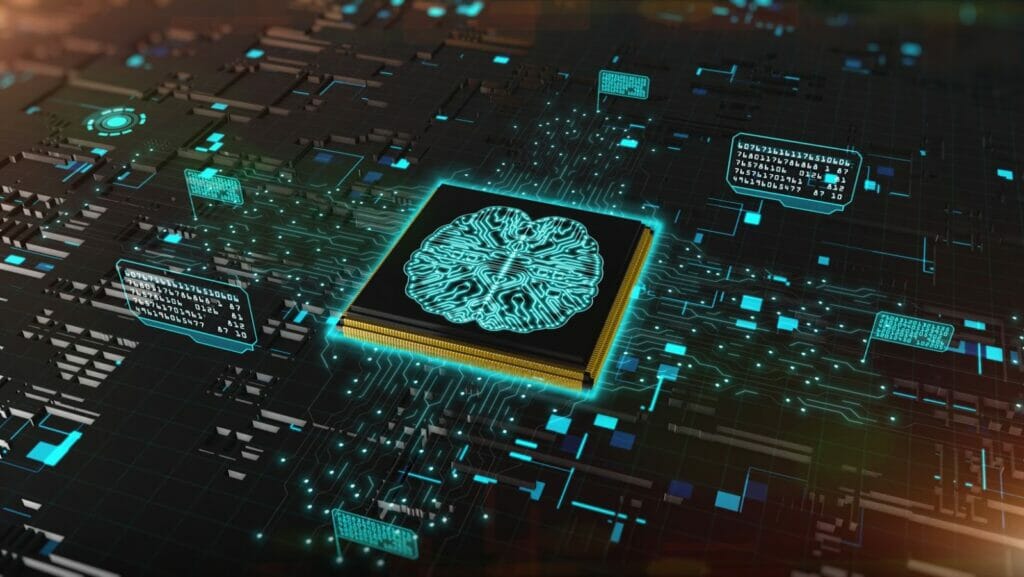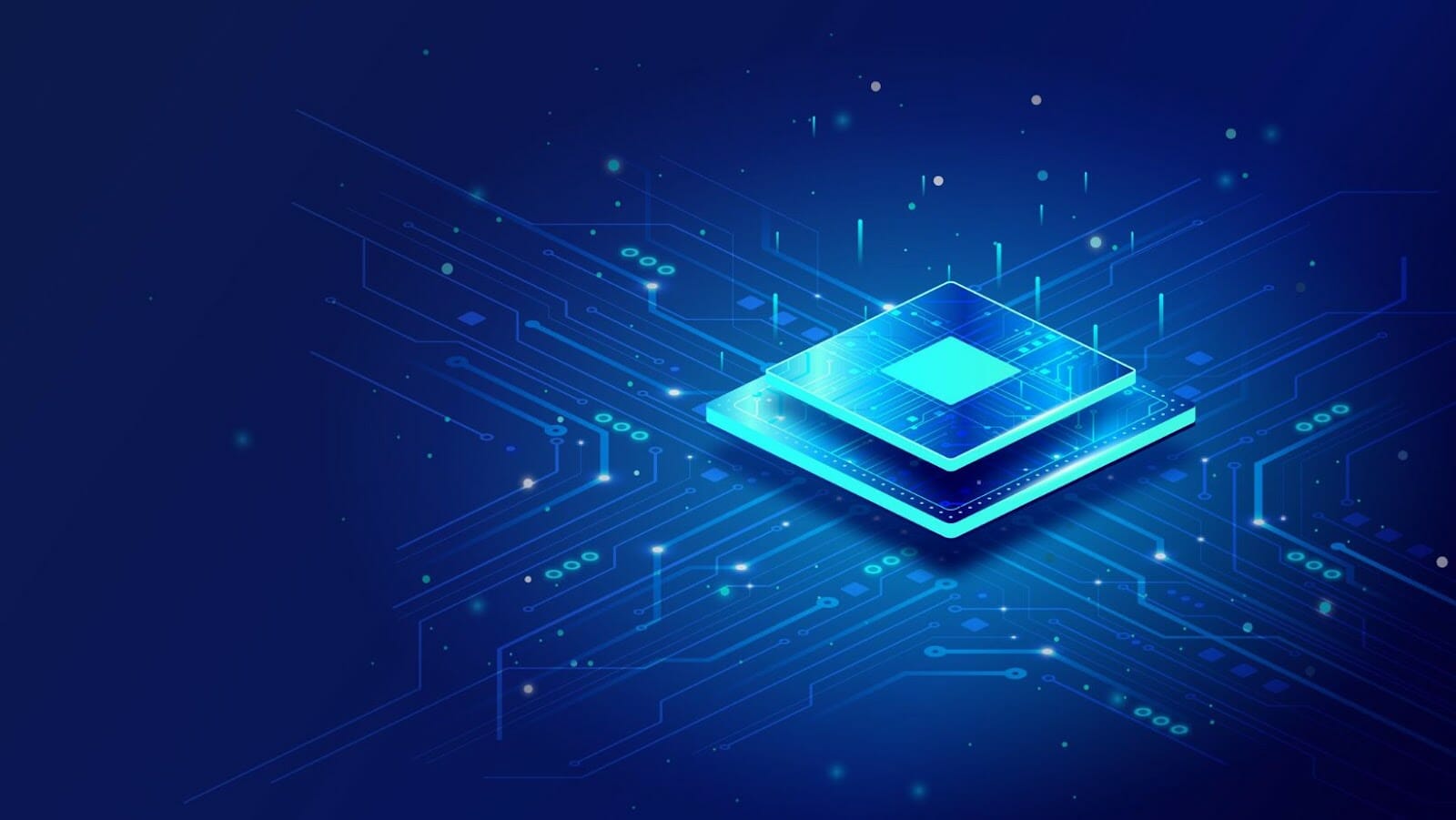
The potential that advanced artificial intelligence (AI) supercomputers have to revolutionize the way humans interact with the world is immense, and Luminous Computing is paving the way with a $105 million Series A round to design and develop one of the most powerful AI supercomputers in the world.
This new generation of AI accelerators equipped with groundbreaking advancements in data compression and power efficiency will present modern businesses with an unprecedented level of scalability, artificial intelligence, performance optimization, and predictive analytics.
Here we will explore some key benefits of implementing an AI supercomputer.
Luminous Computing Raises $105M in Series A Round to Build World’s Most Powerful AI Supercomputer
A Supercomputer is a computer with a high level of performance compared to a general-purpose computer. These types of computers have significantly more computing power and memory than the average computer, making them suitable for running complex tasks.
With Luminous Computing’s recent Series A round of funding, there has been much attention on the power of artificial intelligence (AI) supercomputers.
Let’s take a look at what a supercomputer is and the potential benefits of using one.
Definition
A supercomputer is a system built to perform extremely large and complex calculations and operations at a significantly higher speed than traditional computers. While a traditional computer is limited by its physical size, a supercomputer harnesses the power of many interconnected processors to work on problems faster and more agile.
Supercomputers are powered by advanced algorithms that allow more accurate data analysis, making them effective for tasks such as artificial intelligence (AI), machine learning, drug discovery and life sciences research. These algorithms can run calculations in parallel, giving supercomputers the edge over their conventional counterparts. They can also process vast amounts of data quickly, allowing them to be used in simulations ranging from climate modeling to crash testing.
Recently, Luminous Computing announced its $105 million investment into building the world’s most powerful AI supercomputer. This milestone not only speaks volumes about the evolution of computing but shows our continued commitment towards developing technology that can enable organizations to innovate faster and better analyze complex datasets.
Types of Supercomputers
A supercomputer is an advanced and powerful computing system, often used for highly compute-intensive tasks such as mission-critical applications and research projects. They use a combination of computer processors, disk space, memory, input/output (I/O) and algorithms to process huge amounts of data very quickly. Supercomputers are much faster than the average personal or office computer because their software and hardware have been specially designed for extreme performance.
There are two main types of supercomputers – vector-oriented machines and massively parallel processing (MPP) systems. Vector-oriented machines can process a single instruction operating on multiple data elements in succession; these instructions execute quickly to allow faster and more efficient computation. MPP systems are clusters of independent computers working in parallel on different pieces of a problem rather than divided into individual elements; each ‘node’ shares the same hardware but can still process its jobs simultaneously.
Luminous Computing, an AI start-up that recently raised $105M in Series A, is taking this technology further by building the world’s most powerful AI supercomputer for high performance computing (HPC). This machine will be able to quickly solve complex problems – like forecasting products sales, predicting customer behavior or designing self-driving cars – by leveraging millions of CPUs from different nodes around the world.
What is Luminous Computing?
Luminous Computing is a startup developing an AI supercomputer to accelerate the transition to AI-driven industries. It has recently raised $105M in Series A Round and is recognized for its focus on building the world’s most powerful AI supercomputer.

This article will discuss the company’s background and the benefits of using its AI supercomputer.
Definition
Luminous Computing is the use of an AI-driven supercomputer to analyze and uncover insights faster and more accurately than any current computing system. It offers a unique combination of data science, applied math, machine learning, artificial intelligence, and high-performance computing. Luminous Computing integrates large-scale data sets into user experiences using real-time analytics. This allows for more rapid analysis that can be adapted for various applications.
The technology provides users with an enormous amount of data from which to draw insights. It enables the ability to quickly extract value from disparate sources and analyze behavior patterns in massive volumes of collected data and provide feedback on possible outcomes in seconds rather than hours or days typically associated with traditional data analysis platforms.
It has recently been announced that Luminous Computing raised 105 million dollars in a Series A round to build the world’s most powerful AI supercomputer. This funding will enable them to leverage their existing capabilities while building out their Advanced Research and Development group focused on advancing technology relating to natural language processing, computer vision, robotics, autonomous machines, multi-dimensional nonlinear learning networks and distributed intelligence/machine learning.
How it Works
Luminous Computing is an AI-focused computing platform and hardware startup based in Santa Clara, California, aiming to build the world’s most powerful AI supercomputer. The company’s mission is to provide businesses access to immense computing power and unlimited storage capacity, enabling AI models to operate at extreme speeds and accuracy.
To do this, Luminous Computing combines hardware engineering and software optimization techniques with a novel computer architecture that features both CPUs and GPUs optimized for compute-heavy workloads like artificial intelligence (AI).
At its core, Luminous Computing’s architecture has three main elements: accelerated compute nodes that feature Intel® Xeon® Scalable processors powered by NVIDIA Tesla A100 Tensor Core GPUs; a high-speed interconnect fabric connecting the compute nodes; and a highly optimized software stack including optimized versions of popular frameworks such as Apache Spark™ Machine Learning Library (MLlib) and TensorFlow™. This combination of elements enables the supercomputing platform to maximize deep learning model training efficiency while taking advantage of the scalability, agility and versatility of cloud computing architectures.
Furthermore, this kind of “hyperparameter tuning” approach allows Luminous Computing customers to quickly identify optimal hyperparameters for their models at scale, which can significantly reduce time-to-market cycles while also producing more accurate results from their models. And because physical access is limited in Luminous Computing’s architecture, customers receive advanced security protections as well.
Benefits of Using an AI Supercomputer
With Luminous Computing’s new series A round of funding, they are working on building the world’s most powerful AI supercomputer. This new technology will benefit individuals and businesses, from faster computing to more efficient machine learning.
This article will discuss the advantages of using an AI supercomputer and how it can help businesses and individuals.
Increased Efficiency
AI supercomputers can help to increase efficiency by automating mundane tasks or analyzing data to uncover previously undetected patterns that may lead to new solutions. By using a powerful artificial intelligence (AI) supercomputer such as Luminous Computing Raises $105M in Series A Round, businesses and organizations have the potential to cut costs and time while improving results.

An AI supercomputer can perform millions of calculations simultaneously, optimizing data analysis and increasing the speed at which they are performed. These calculations can include many complex tasks such as deep learning algorithms, natural language processing, image recognition, AI-based forecasting and more. Moreover, an AI supercomputer can be taught to carry out many of the same decisions humans would make allowing for faster decision-making with greater accuracy than ever before. Additionally, utilizing an AI supercomputer enables organizations to consume enormous amounts of data to make predictions about future trends or outcomes with greater precision than ever before.
With increased efficiency come other benefits like cost savings over time. An AI supercomputer reduces the need for human labor in certain tasks while utilizing less energy than traditional computers due to its power-efficient design. Utilizing the cloud services offered by an AI Supercomputer also decreases data storage cost and increases scalability enabling businesses and organizations to quickly react in response to changing needs due to its flexibility. Ultimately, these advantages lead companies and individuals into a new age of intelligent computing capabilities resulting in a stronger competitive edge and higher chance for success.
Improved Accuracy
The use of an AI supercomputer has the potential to provide significant improvement in the accuracy and speed of machine learning models. By leveraging multiple hardware accelerators such as graphical processing units (GPUs) and high-performance computing clusters, AI supercomputers can offer tremendous computing power, allowing complex deep learning networks to process vast amounts of data.
This vast processing power allows for more complex neural network architectures and powerful algorithms to be used for training and inference, resulting in much higher levels of accuracy than would be available using stand-alone CPUs. Furthermore, AI supercomputers are capable of parallelized training techniques, which involve breaking down a task into small parts that can be completed concurrently. Such techniques improve existing algorithms by eliminating weak areas due to overlap in computation workloads.
In addition, by utilizing NVIDIA GPUs on a distributed platform across many nodes and processors, AI supercomputers can speed up training tasks by several orders of magnitude while reducing latency with high throughput. This drastically reduces the time it takes to complete tasks and reduces energy consumption. As AI models become more accurate, they can reach end goals faster with greater precision since they have access to large data sets efficiently processed at much faster rates than available in non-supercomputer systems.
Cost Savings
The key benefit of using an AI supercomputer is cost savings. Compared to traditional computing, AI supercomputers are designed to leverage large clusters of distributed resources such as CPUs, GPUs, and area-optimized co-processors that can reduce overall cost. For enterprises, these cost savings can help cut down on large investments for in-house data centers.
Luminous Computing’s AI Supercomputer is powered by a unique hardware architecture that allows a series of interconnected GPUs to operate at native GPU speeds and efficiently scale with the amount of data being processed. By leveraging the latest technologies such as HPC node clustering and Unified Memory Access (UMA) networks, Luminous Computing can offer business users significant cost savings by allowing them to get more out of their existing investments in hardware and compute power.
Furthermore, with the ability to run multiple workloads simultaneously on one machine, companies can save time typically spent on processes such as job scheduling or system reboots across muliple machines. In addition to benefiting from powerful computing with low costs, Luminous Computing also helps customers streamline their resource usage or reuse excess capacity without having to maintain or manage additional resources or pay for idle computing power.
This means businesses can access powerful computations without having to commit any budget or future resources up front – making it easier to explore new avenues of big data processing than ever before.
Increased Speed
AI (Artificial Intelligence) supercomputers are increasingly becoming recognized for their potential in augmenting computer processing power and the impact they could have on the entire world. These machines can analyze large volumes of data rapidly, open up new possibilities in medical research and increase overall computing speed.

Increased Speed: AI supercomputers are much faster than traditional computers as they use parallel processing to analyze and interpret data quickly. With an AI supercomputer, tasks that can take days or even weeks on a traditional computer can be completed in minutes since parallelism allows for multiple processes to be running at once. This increased speed can bring radical new advances with applications from genetic sequencing, machine vision, epidemiology and drug discovery to others in robotics such as autonomous robots driving cars and robots working alongside humans.
Reduced Costs: By removing the need for manual labor performing computationally-intensive tasks, AI-capable supercomputers reduce costs significantly by cutting out human intervention. This technology is being leveraged in many countries that lack access to or experience with developing technology optimized for AI computations like deep learning algorithms listed above. It also allows businesses to optimize their staff better, freeing up resources that would otherwise have gone into those manual tasks. In addition, AI-capable supercomputers reduce expenses incurred by needing additional energy consumption due to its efficient nature compared to other current leading technologies thus reducing operating costs further while still providing enough computing power required.
Luminous Computing’s Series A Round
Luminous Computing recently raised $105M in a Series A funding round to build the world’s most powerful AI supercomputer. This type of technology has many benefits, ranging from improved data analysis to real-time analytics.
In this article, we will look at some of the notable benefits of using Luminous Computing’s AI supercomputer.
Overview
Luminous Computing, a U.S.-based artificial intelligence (AI) computing company, raised a Series A investment of $105 million to build the world’s most powerful AI supercomputer. The capital will enable the company to develop and produce ultra-high-performance computing systems purpose-built for AI workloads.
The company is pioneers in on-demand, cloud-scale AI development and deployment in various areas such as pharmaceuticals, finance, robotics and self-driving cars. Luminous Computing’s new AI supercomputer will provide an enhanced suite of products and services to accelerate significant advancements in those areas. The round was led by insight Venture Partners with participation from Lux Capital, Emergence Capital, RiverPark Ventures and others.
The Luminous Computing platform provides powerful benefits for businesses looking to get an edge with artificial intelligence including an ultrafast processing speeds which enable faster results during training, development and deployment tasks; improved efficiency when using tools like TensorFlow and Pytorch; enterprise memory systems which include quick access storage optimizations; simplified scalability allowing businesses to add additional TPU cores and more without any down time; optimized GPUs which allow for quick repurposing with minimal investments needed in infrastructure; support for AI accelerators such as NVIDIA RTX3000 giving increased performance even in deep learning tasks; global availability across major cloud providers like AWS, Google Cloud Platform and Microsoft Azure so organization can use the best computing services available globally with scalability features included across different given regions; integration of open source frameworks built specifically on top of Distributed Storage Pools (DSP) which enable hybrid multi model deployments backed by reliable security protocols approved by industry standards bodies like ISO/IEC 27001 for secure data management ensuring all processes are compliant with laws governing use of such data.
Impact on AI Supercomputing
Luminous Computing, a U.S.-based company, has announced that they have closed a $105-million Series A round led by investment giant SoftBank. The new funding will be used to build the world’s most powerful AI supercomputer. This development brings numerous benefits to the world of AI and computer science:
1) Scaling up computing power: This supercomputer will be capable of processing exponentially more data than currently possible. It has been estimated to provide over 10 times the capacity of other such systems, allowing for applications such as advanced data analysis and robotics with greater speed and accuracy than ever before.
2) Enhanced efficiency in data output: By utilizing more complex algorithms, this supercomputer will have the potential to perform better than earlier AI systems to provide faster and more accurate results from streaming data sets. This will improve decision-making capabilities for those relying on AI for research or business purposes.
3) Improved cost efficiency: A more efficient AI system such as this could help save costs in areas like energy consumption due to its high performance compared to traditional computer systems. Additionally, this system can help organizations do away with costly hardware investments, which could free up capital for developing new products that leverage existing AI technologies within the field of computer science.
With Luminous Computing’s Series A funding round now complete, these incredible advancements should finally come into fruition within the next few years – paving way for a new generation of computer technology that can help unlock further possibilities within Artificial Intelligence.
Conclusion
The benefits of using AI supercomputers are clear. As highlighted in the Luminous Computing Series A round investment, these machines can provide extreme computational processing power to tackle big data problems that traditional hardware could not solve. AI supercomputers have the potential to revolutionize industries and have already seen successful use cases in healthcare, finance, automotive, and more.
With increased focus on developing artificial intelligence-driven solutions for various sectors of industry, AI supercomputers can aid businesses in achieving competitive advantage as well as unlocking new opportunities for innovation.
AI supercomputers are expected to become increasingly popular as technology and software advancements grow more sophisticated and powerful. Companies such as Luminous Computing will be instrumental in making these systems a reality for the common user, providing businesses access to the most advanced computing capabilities available for their applications.



